Sergeant Celestino Chavez, Jr.
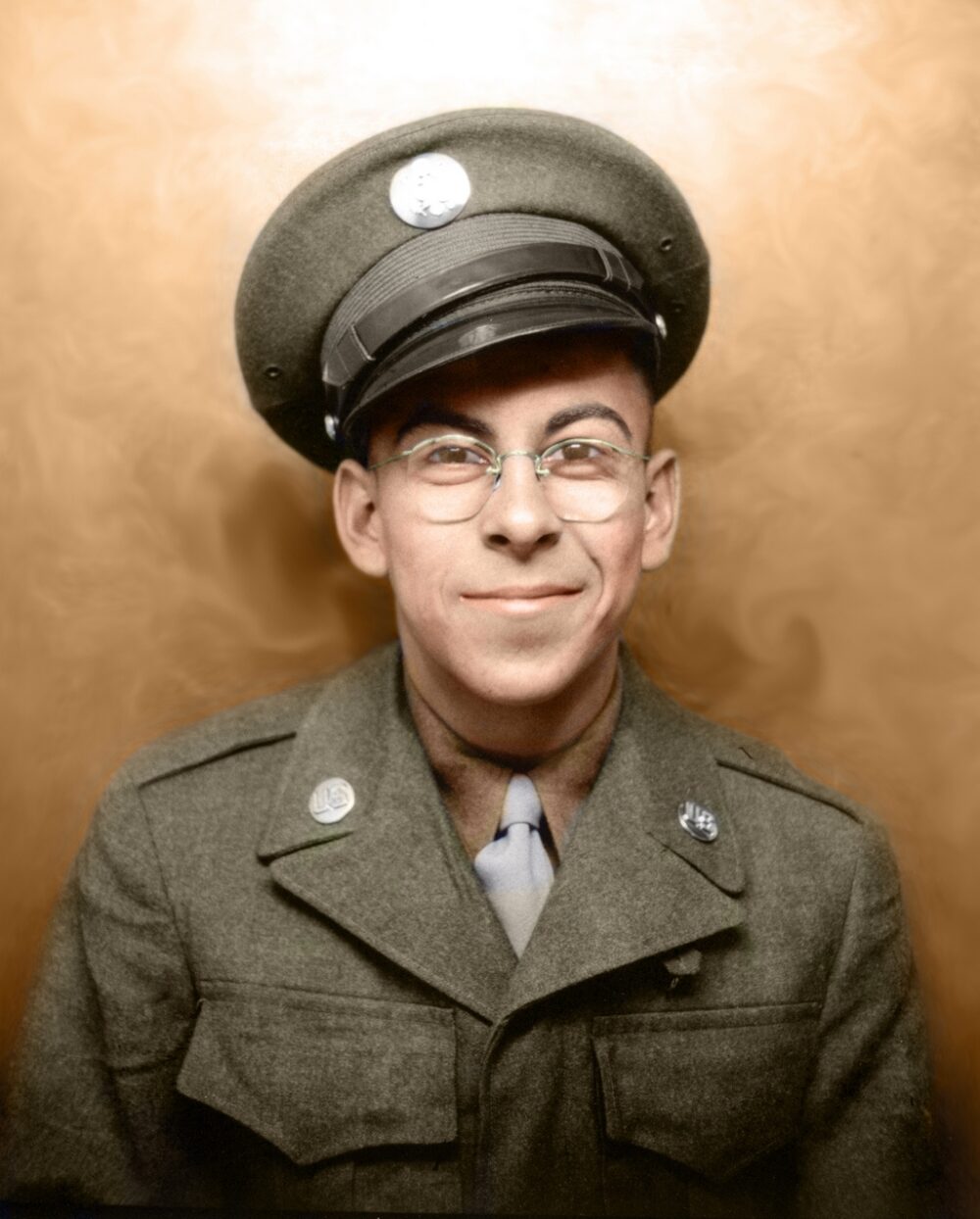
- Unit: 7th Infantry Division, 15th Antiaircraft Artillery Automatic Weapons Battalion, D Company
- Service Number: 18255711
- Date of Birth: February 27, 1931
- Entered the Military: January 10, 1949
- Date of Death: December 2, 1950
- Hometown: Gallup, New Mexico
- Place of Death: Chosin Reservoir, North Korea
- Award(s): Silver Star, Bronze Star, Purple Heart, Korean Service Medal, United Nations Service Medal Korea, Presidential Unit Citation
- Cemetery: Courts of the Missing, Court Four, Honolulu Memorial, National Memorial Cemetery of the Pacific, Honolulu, Hawaiʻi. Hillcrest Cemetery, Gallup, New Mexico
Tularosa Middle School (Tularosa, New Mexico)
2024/2025
Early Life
Youngest Son of a Large Family
Celestino Chavez, Jr. was born in Gallup, New Mexico, to Lupita Chavez Bustamante Franco and Celestino Chavez. He was the only son of Celestino and Lupita, and was baptized on March 15, 1931, at Sagrada Corazon (Sacred Heart) in Gallup, New Mexico. His father passed away at the age of 45 when Celestino was nine years old.
Lupita was twice widowed, and Celestino grew up with four older siblings: Faustino, Frank, Marguerite, and Urban Franco. Lupita’s father, Jose Bustamante, served in the Civil War and lived with Lupita and her family until his death in 1930. He never met his youngest grandson.
In 1940, 15-year-old Urban was the only person in the household of seven who was employed (at a theater.) The youngest family member was Celestino’s niece, Victoria, who was one years old at the time.
A Culture and History of Military Service
Celestino’s three older brothers, Faustino, Frank, and Urban, all served in the U.S. Army during World War II. Celestino watched as each of them volunteered to serve: Faustino in 1940, Frank in 1942, and Urban in 1943 when Celestino was 13 years old.
By 1945, Celestino was 15, and World War II ended. His brothers returned home, and news was reaching Gallup of the Navajo “code-talkers.” These local heroes used their native Navajo (Diné) language to transmit secret messages and defeat the Japanese. Celestino had every reason to believe that he could join the Army, serve with honor, and return home.
Selectively Dependable
Celestino was Catholic, and he attended Cathedral High School in Gallup beginning in the eighth grade. Prior to this, he attended public schools. His academic record rates him as “Selectively Dependable: shows high persistence in undertakings in which there is particular interest, but is less likely to carry through other assignments.”
Celestino did not do well in school. He had low grades, and his school record stated, “Public Schools all his school life except eighth grade. He is not recommended for our High School.”
It was common at this time for students to “graduate” eighth grade and go directly into the workforce if they were not planning to attend college. Celestino withdrew in August 1947 and enrolled on September 25, 1947, to attend school in the mornings only, while he worked in the afternoons. He worked to support his family but was still trying to finish high school.
The final note in his academic record stated simply that he “withdrew–no credit earned.” Celestino may not have found success in school, but he would become a true hero.
Ben Baca, his nephew, said of Celestino, “As a child he admired his three older brothers who enlisted in the Army at the start of World War II. Celestino looked forward to the day when he himself would be old enough to serve his country. Eventually he got his wish. On his eighteenth birthday, despite protests from his mother, Celestino enlisted into the U.S. Army. The year was 1950, the time of the Korean Conflict.”
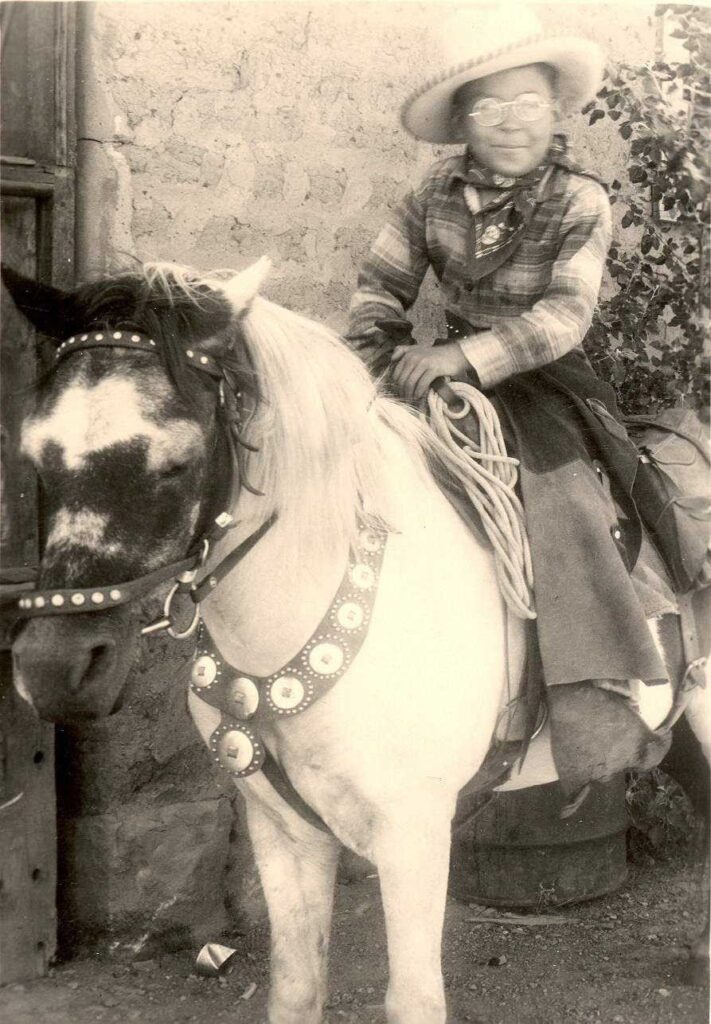
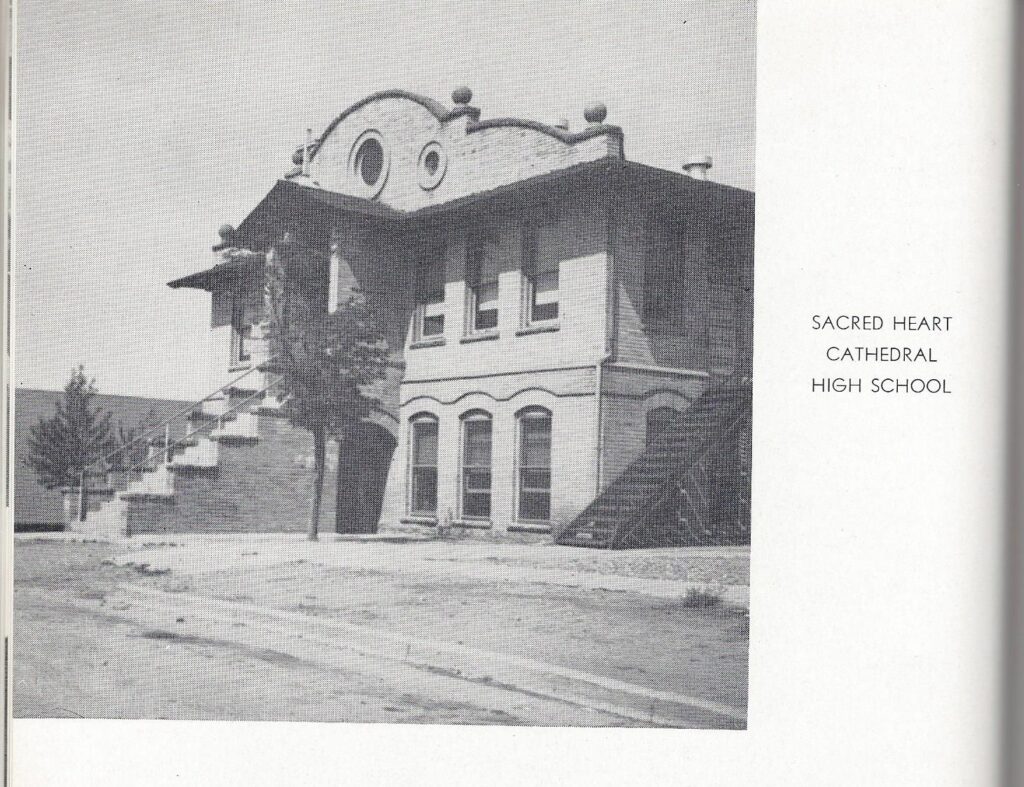
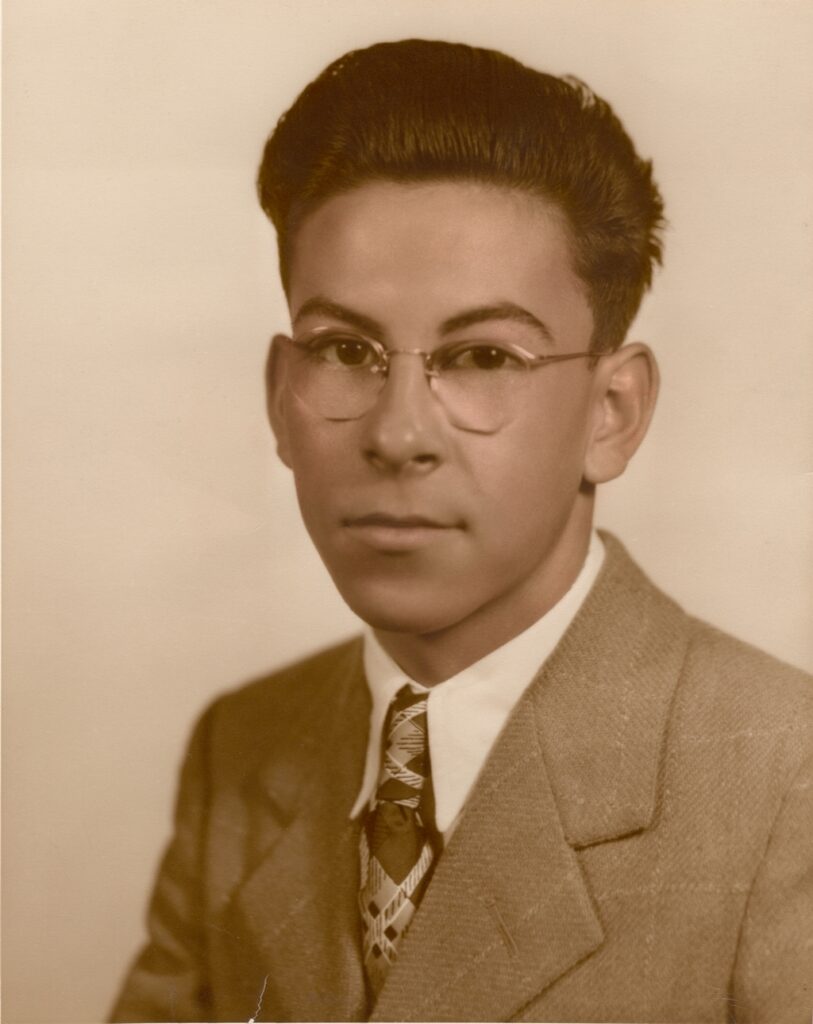
Homefront
Gallup, New Mexico: The Heart of Indian Country
Celestino Chavez was born in Gallup, New Mexico, “the heart of Indian country.” The annual Inter-Tribal Ceremonial celebration still takes place in Gallup every summer, as it has since 1922. The town is located between the Zuni reservation and the Navajo Nation, which was the largest reservation in the United States. Native American textiles and jewelry have been major exports since the 1920s and still are today.
Coal Mines, Railroads, and Route 66
The discovery of coal in 1895 meant Gallup became a key part of the Santa Fe railroad. In fact, the town was named after David L. Gallup, paymaster for the railroad. When trains stopped using coal to fuel the engines, the economy of Gallup suffered. Many of the coal mines in the area are now abandoned.
Residents benefited from the decision to pave the “Old Trails Highway” through town in 1934 as a part of Route 66. Hotels were established, and a “Giant Katchina” roadside attraction beckoned travelers to visit the “Indian capital.”
New Mexico’s Atom Bomb
Ask anyone what they know about New Mexico, and most will make a connection to Los Alamos and the atomic bomb. During World War II, the United States government hid the existence of the entire city where the bomb was developed. The first plutonium implosion device in the world was tested at the Trinity Site on White Sands Missile Range, on July 16, 1945.
The atomic bomb decisively ended World War II when the U.S. used it against the Japanese cities of Hiroshima and Nagasaki. Frank had already come home from the war, and Celestino’s other brothers returned home within a few months. The entire family was home for Christmas in 1945 because the bomb ended the war so abruptly.
The Golden Age in Gallup
Even Hollywood had a stake in Gallup when Celestino Chavez was growing up here. Western movies were big business, and many were filmed in and around Gallup.
You can still visit the El Rancho Hotel, with its giant staircase in the lobby, looking much as it did when it opened in 1936. Notable stars from the Golden Age of Hollywood who stayed at the hotel include Gregory Peck, John Wayne, Ronald Reagan, Lucille Ball, Katherine Hepburn, Erroll Flynn, Kirk Douglas, and Humphrey Bogart.
Gallup: Home of Heroes
Gallup has a proud history of military service. A Tacoma-class frigate, the USS Gallup, was named for the town and served in the Second World War.
Chester Nez and Thomas Begay served as Navajo Code Talkers in World War II and grew up in the area. These heroes helped defeat the Japanese by using their native Navajo language as a secret code. They sent messages which could not be interpreted by the enemy.
Hiroshi “Hershey” Miyamura was also from Gallup. He won the Congressional Medal of Honor, the highest honor for the U.S. military, during the Korean War. He was honored with parades, met the governor, and even shook hands with the president of the United States. Miyamura High School in Gallup is named for him.
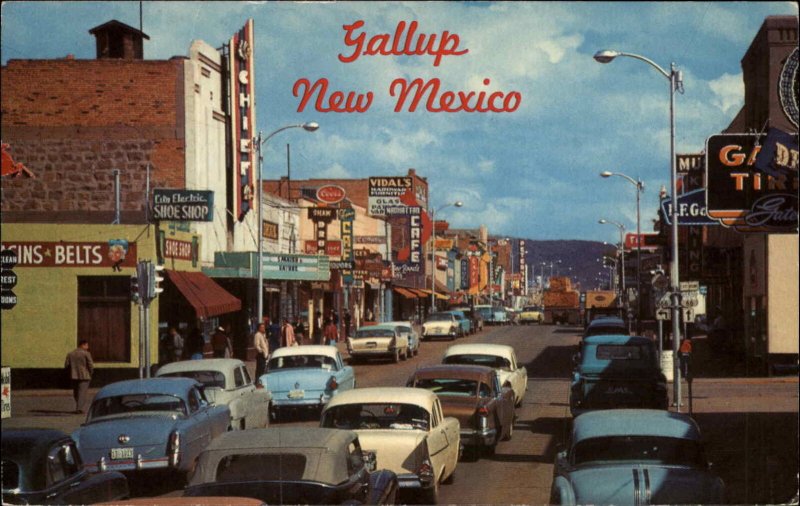
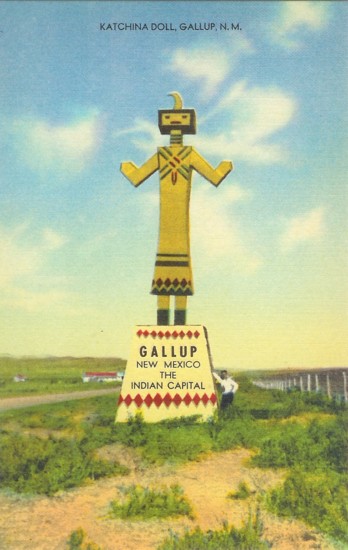
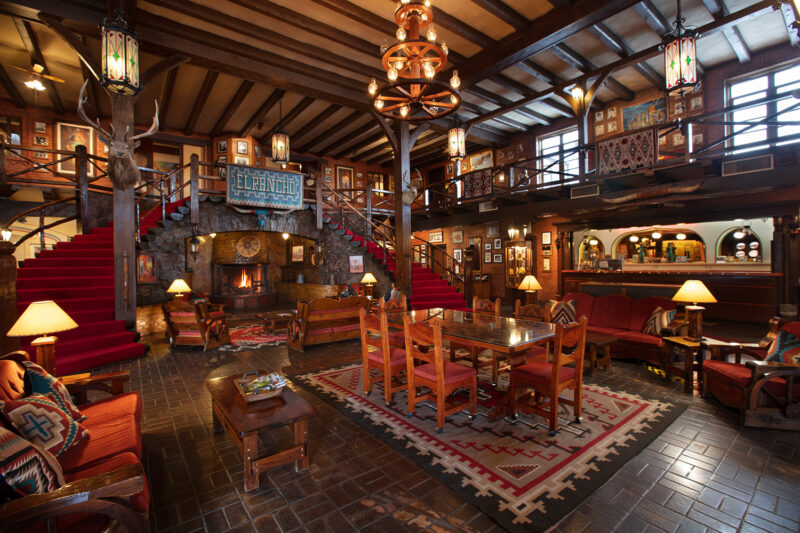
Military Experience
Celestino Chavez enlisted in the U.S. Army on January 10, 1949, six weeks before his eighteenth birthday. His enlistment record reveals he was slight in stature but in excellent health. His medical records list his build as “slight,” his height at 62 inches, and his weight at 106 pounds. He previously had whooping cough and measles and had worn glasses since age three, but was healthy.
On September 10, 1949, Chavez was seen at the Fort Bliss dental clinic in El Paso, Texas. This was most likely where he did basic training. His service record indicates his first station as Fort Lewis, Washington, from January 1, 1950, through August 5, 1950.
An Important Job
Chavez was part of Battery D, 15th Antiaircraft Artillery (AAA) Weapons Battalion. He manned the M19 anti-aircraft gun carriage. We do not know which position he took, but manning this gun required strength and stamina.
The M19 anti-aircraft gun was often mounted on the side of a ship to eliminate threats from the air. The gun had two barrels and took five men to operate. In this case, the gun was mounted on a vehicle base, usually with tank treads. Chavez’s small size meant he could maneuver more easily in the tight quarters.
Battery D was part of the 7th Infantry Division. The unit arrived in Yokohama, Japan, on August 24, 1950, and was stationed in the vicinity of Camp Drew. They took a train to Yokohama on September 5, 1950, and on September 6, 1950, departed Yokohama with “port of destination unknown.”
Destination Unknown
Chavez’s unit arrived in Pusan Harbor, Korea, on September 9, 1950, and remained there for two weeks. War diary notes describe troops debarking the ships and taking a road march, then returning the same day. On September 23, the convoy departed Pusan Harbor for another unknown destination.
Chavez and his comrades in arms debarked at Inchon Harbor on September 25, then moved to the vicinity of AnYang-Ni. They were attached to Regimental Combat Team (RCT) 32, part of X Corps. These soldiers took part in the Battle of Chosin Reservoir, one of the most intense battles ever fought by U.S. troops. Most of them did not survive.
A Flawed Plan
In November 1950, General MacArthur planned to end the Korean War in time for Christmas by pressing on to the Yalu River, located on the border between China and Korea. Colonel Allen MacLean, in command of the frontline forces, was concerned the People’s Volunteer Army (PVA) presence was far more significant than expected. General Edward Almond visited the frontline troops and said, “We’re still attacking, and we’re going all the way to the Yalu. Don’t let a bunch of Chinese laundrymen stop you.”
As a result, the forces were stretched out over 78 miles, effectively with no defensible perimeters. This left them vulnerable to the attack mounted by the Chinese Communist Forces (CCF), and when it came on November 27, 1950, they were scattered. Pockets of troops remained, surrounded by the enemy. To survive, they would need to fight their way back to Hagaru-ri, between hills full of enemy soldiers, through blocked roads, and over blown-out bridges.
It’ll Pass Fast
Chavez wrote letters home, and some are still in the possession of his family. He signed his letters with a silly face doodle and a backward “CC.” The doodle resembled him with a prominent smile and glasses. In one of his letters, he observes, “Home, it sounds so far away. A year and a half away, that’s a long ways. It’ll pass fast. I hope.”
Major Effort to Merely Exist
Chavez found himself on the front lines of one of the bloodiest battles in history, in the bleakest conditions. Temperatures plunged to 34 degrees below zero. Troops were cut off from supply lines and reinforcements. His unit and others would be left behind, forced to fight their way out if they wanted to survive.
This war diary entry highlighted the shortages that were present before the troops were cut off by the attack of the CCF:
November 14, 1950: Critical Shortages: Clothing: cap, fur lined, 1270 ea.; Tent, Artic, 635 ea.; Parka, fur liner, 1270 ea. Mittens, mufflers, wool drawers, etc. “Individual clothing and equipment presently in hands of troops is proving to be inadequate in this extreme sub-zero climate. While it may be sufficient for areas which have temperatures of 0 or above, arctic clothing and equipment is needed in this area.
“Effectiveness of troops is curtailed greatly since it requires a major effort on part of each individual to merely exist.” -War Diary, 7th Infantry Division, November 14, 1950.
Gallantry on Display
Chavez lost his life in the initial onslaught, defending his position and refusing aid despite being seriously wounded. He continued to man his gun carriage and fought valiantly until the CCF attack was thwarted. He then fell from the gun carriage and was taken to the aid station.
Chavez’s body was taken to the first aid station and placed outside the aid tent. However, when the withdrawal began on December 1, 1950, his body and the bodies of others had to be left behind. The decimated troops retreated to Hagaru-ri in a desperate flight for survival. His remains have not been identified or located after the war.
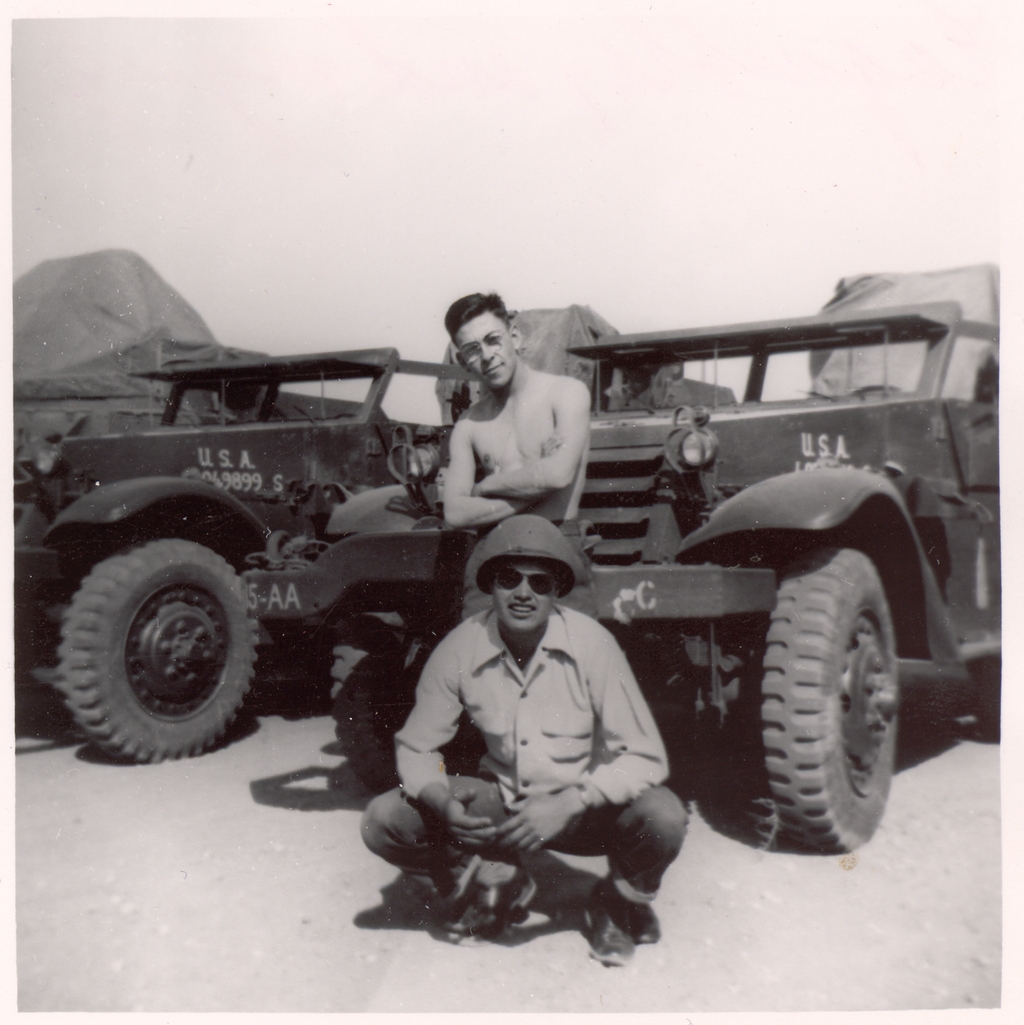
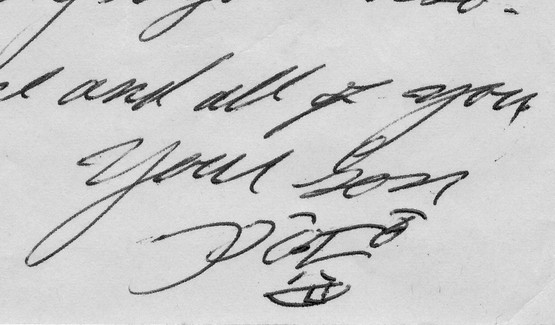
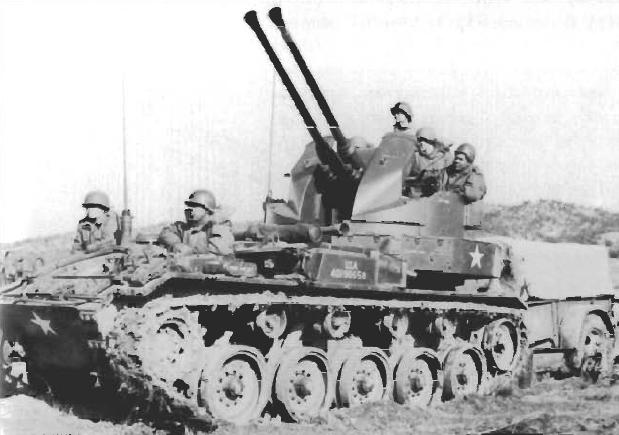
Commemoration
Missing in Action
Corporal Celestino Chavez, Jr. was killed in action at the Battle of Chosin Reservoir on November 30, 1950. He was 19 years old. His official date of death is listed as December 31, 1953, because he was missing in action (MIA) before officially being declared deceased. He was promoted to the rank of sergeant during the time he was MIA.
Just before Christmas 1950, newspapers across the state spread the news that Chavez was missing. The McKinley County Warrior, a local Gallup newspaper, ran an article about him. Newspapers across the state in Clovis and Albuquerque reported the news that Chavez was missing.
The President of the United States posthumously awarded Chavez the Silver Star. The medal was presented to his mother, Lupita Chavez Bustamante Franco, on June 6, 1950, in her home by Lieutenant Colonel Frank Eccles. The citation reads:
On this date, Corporal Chavez’s M-19 twin 40-mm. gun carriage was defending a portion of the perimeter when the enemy began a ‘banzai’ charge against the position shortly before 0300 hours. Corporal Chavez was struck and seriously wounded during this attack, but he refused to be evacuated to the aid station because there was no other man available to replace him. He stayed at his post voluntarily and despite his wound kept the weapon firing. When the enemy attack had been broken up by accurate and intense fire of the M-19, Corporal Chavez, weakened by loss of blood, collapsed unconscious and fell from the M-19 to the ground. He was given medical attention and evacuated to the Aid Station. As a result of his heroic actions the M-19 was kept in action, the ‘banzai’ charge was broken up, and the perimeter was kept intact at that point. The gallantry displayed by Corporal Chavez on this occasion was in keeping with the highest traditions of military service and reflects great credit upon himself, his unit, and the United States Army.
Never Recovered
Chavez’s remains have never been recovered. His mother ordered a headstone to be placed in Hillcrest Cemetery in Gallup, New Mexico. The date of death is listed as December 31, 1953, which is the date the United States Army officially declared him dead.
Chavez’s grave lies beside that of his grandfather, Jose DeLosRayes Bustamante, a veteran of the Civil War. When his mother Lupita passed away in 1970, she was laid to rest beside her father in Celestino’s empty grave.
His name is also permanently inscribed in the Honolulu Memorial at the National Memorial Cemetery of the Pacific in Honolulu, Hawaiʻi
Not Forgotten
Celestino Chavez, Jr. was a true hero. A memorial certificate from President Dwight D. Eisenhower in memory of Chavez reads, “He stands in the unbroken line of patriots who have dared to die that freedom might live, and grow, and increase its blessings. Freedom lives, and through it, he lives–in a way that humbles the undertakings of most men.”
May future generations remember his sacrifice and cherish the freedom purchased at such a cost.
Remains Identified
On April 29, 2025, the Defense POW/MIA Accounting Agency announced that Chavez’s remains had been identified.
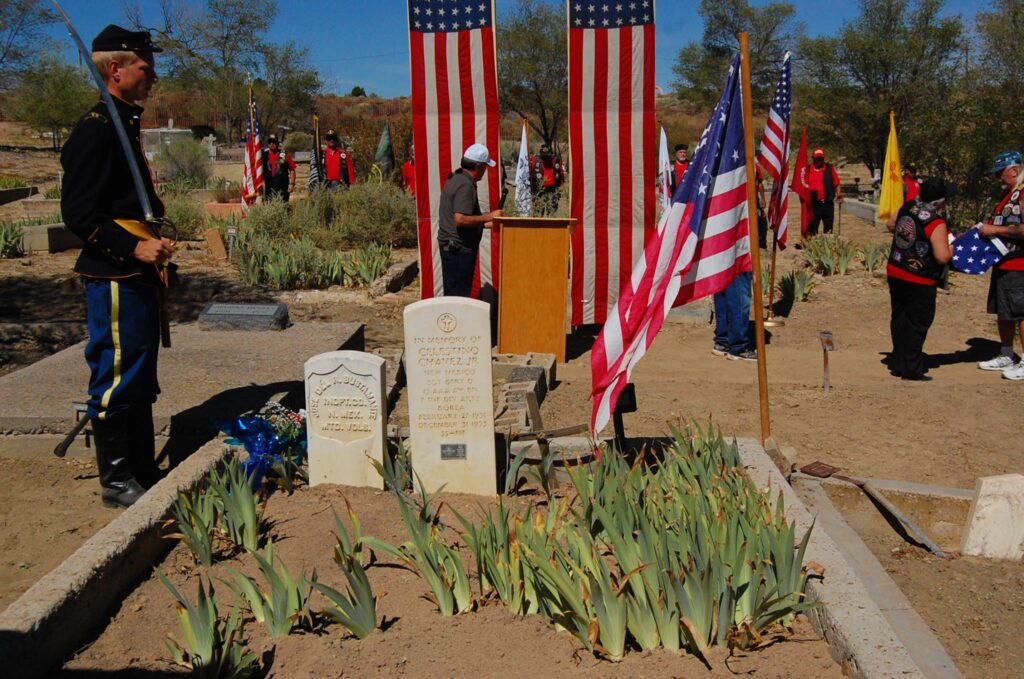
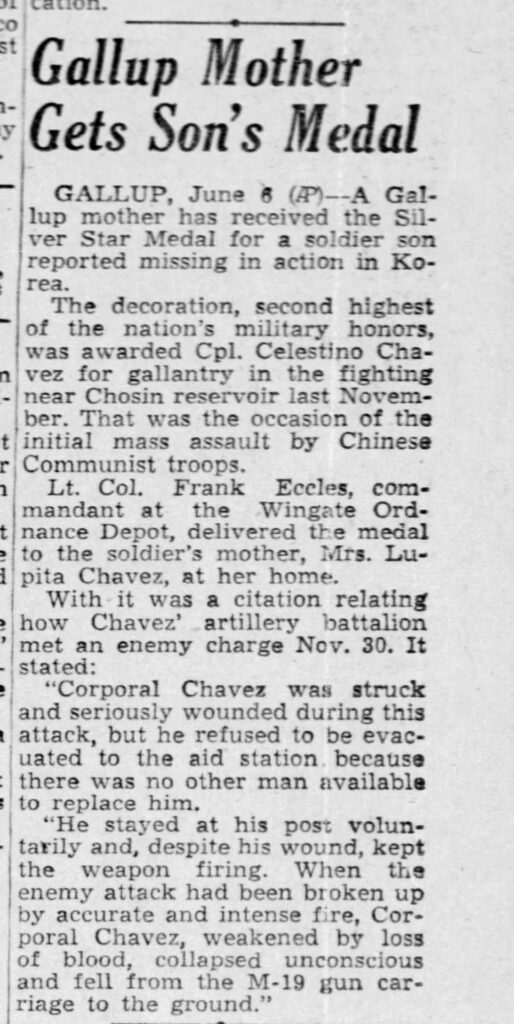

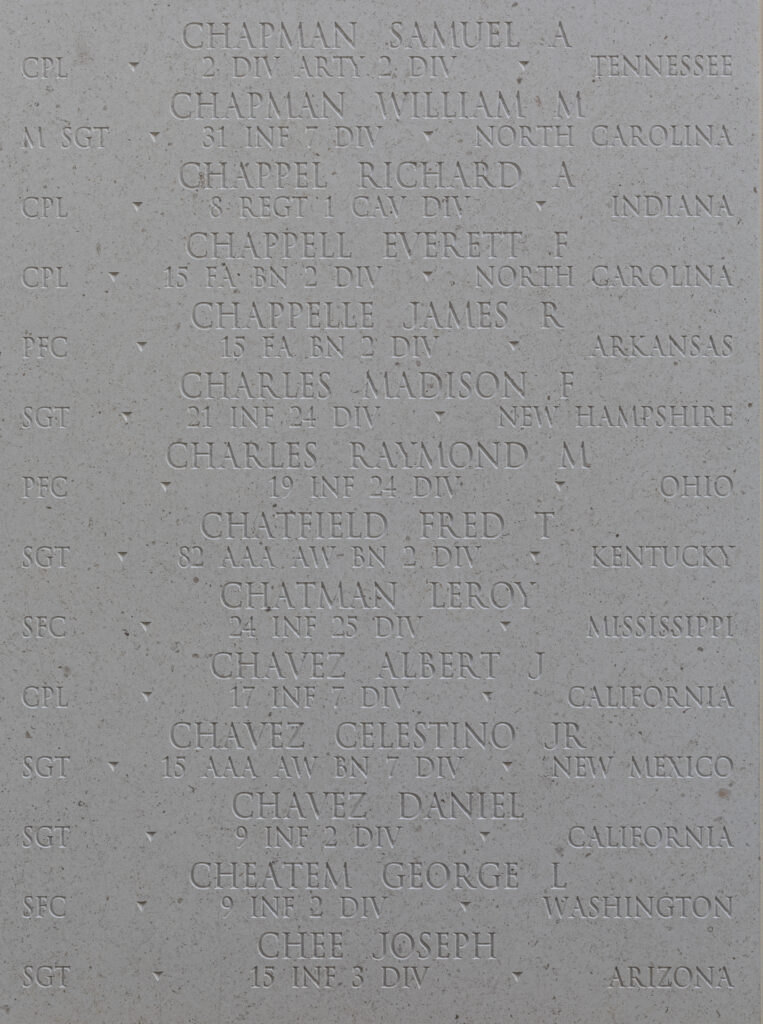
Bibliography
Primary Sources
“7th Infantry Division Records.” Korean War Project. 1995-2025. Accessed February 12, 2025. https://www.koreanwar.org/html/2018-jpac-7div.html.
“American Troops Two Miles From Border.” The Gallup Independent [Gallup, NM], November 20, 1950. https://basic.newspapers.com/image/5799366.
Baca Family Records. Courtesy of Ben Baca.
Celestino Chavez Jr. Individual Deceased Personnel File. National Archives and Records Administration – St. Louis.
“Celestino Chavez, Missing in Action, Awarded Silver Star.” The Gallup Independent [Gallup, NM], June 5, 1951. Newspapers.com (5934392).
Gallup. McKinley County. 1940 U.S. Census. Digital images. https://ancestryclassroom.com.
“Rail Coal Orders Rapidly Disappear.” Gallup Independent [Gallup, NM], August 14, 1945. Newspapers.com (10979475).
“Ready for the Reds.” The Gallup Independent [Gallup, NM], December 26, 1950. Newspapers.com (5803235).
“Soldier Accounted For From Korean War (Chavez, C.).”Press Release. April 29, 2025. Defense POW/MIA Accounting Agency. https://www.dpaa.mil/News-Stories/ID-Announcements/Article/4160281/soldier-accounted-for-from-korean-war-chavez-c/.
Secondary Sources
The Battle of Chosin Reservoir: The History of the Chinese Victory that pushed UN Forces out of North Korea during the Korean War. Charles River Editors, 2024.
“Celestino Chavez Jr.” American Battle Monuments Commission. Accessed December 9, 2024. https://www.abmc.gov/decedent-search/chavez%3Dcelestino.
“Celestino Chavez Jr.” Defense Personnel POW/MIA Accounting Agency. Accessed December 9, 2024. https://www.dpaa.mil/portals/85/KoreaAccounting/pmkor_una_NEW%20MEXICO_20200529.pdf.
“Celestino Chavez Jr.” Find a Grave. Updated September 30, 2006. Accessed February 6, 2025. https://www.findagrave.com/memorial/15942197/celestino-chavez.
“Chief Theater.” Cinema Treasures. Accessed February 3, 2025. https://cinematreasures.org/theaters/13681.
“El Rancho Hotel, Gallup.” New Mexico Nomad. Accessed February 3, 2025. https://newmexiconomad.com/el-rancho-hotel-motel-gallup/.
“Gallery.” Hotel El Rancho. Accessed February 3, 2025. https://elranchohotelgallup.com/gallery/.
“Gallup’s Coal Mining Ghost Towns.” Visit Gallup. Accessed February 3, 2025. https://www.visitgallup.com/blog/carbon-citys-coal-mining-legacy/.
“Hiroshi Miyamura.” Congressional Medal of Honor Society. Accessed January 30, 2025. https://www.cmohs.org/recipients/hiroshi-miyamura.
“The Korean War Era.” U.S. Army Center of Military History. Accessed August 26, 2024. https://www.history.army.mil/html/bookshelves/resmat/korea/intro/index.html.
“Lupita Bustamante Chavez.” Find a Grave. Updated March 4, 2012. Accessed March 26, 2025. https://www.findagrave.com/memorial/86241047/lupita-chavez.
M19 gun carriage. Photograph. American Fighting Vehicle Database. Accessed on February 5, 2025. https://tank-afv.com/ww2/US/M19-MGMC.php.
M19 gun crew. American Fighting Vehicle Database. Accessed February 5, 2025. http://afvdb.50megs.com/usa/pics/40mmgmcm19/40mmgmcm19.html.
New Mexico, 1940. Map. 1986. New Mexico Museum of Art. Accessed March 26, 2025. https://online.nmartmuseum.org/nmhistory/utilities/maps/new-mexico-1940.html
“SGT Celestino Chavez Jr.” Korean War Project. Accessed December 9, 2024. https://www.koreanwar.org/html/4997/korean-war-project-new-mexico-ra18255711-sgt-celestino-chavez-jr.
This profile was researched and created through the Researching Silent Heroes program, sponsored by the American Battle Monuments Commission.

